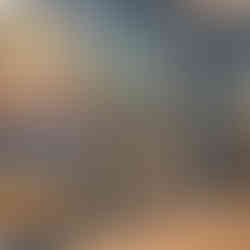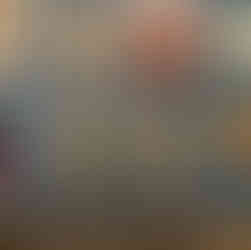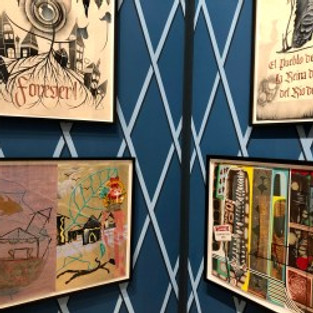Lari Pittman at the Hammer Museum
- artandcakela
- Dec 14, 2019
- 3 min read
Updated: Jan 16

Lari Pittman, Declaration of Independence, Hammer Museum; Photo credit Jeff McLane
Lari Pittman: Declaration of Independence
Hammer Museum, Los Angeles through January 5
Written by Shana Nys Dambrot Sometimes a big deal single-artist museum show is an eye-candy crush crowd-pleaser, sometimes it’s an in-depth and perhaps overdue look at an artist’s entire career, with an eye cast toward art history. Sometimes with retrospectives (especially of hometown heroes) it’s just plain wonderful to see favorite paintings again, the most compelling works remembered from decades of solo shows, dispersed to collectors and institutions, now gathered and reunited. And sometimes, and this is the most special of all, even the most familiar story proves itself to be full of surprises and fresh insights. The epic career survey of Lari Pittman currently on view at the Hammer Museum is all of the above — and something else, it is also a profound and unexpectedly moving narrative experience.
Laying the show out chronologically makes a lot of sense, partly because Pittman’s early works from the mid-1980’s — and a recounting of traumatic life events that informed his sensibilities at this time — are not nearly as well known as has been the subsequent fruition of his trademark symbol-rich maximalism. In important ways the works from this time presage his ongoing subversions of the conventional painted surface; he played with mixed media and assemblage and even sculpture at this time. There was a viscerality in the textures, variations, distresses, punctures, piercings, scarring, and dark, hefty wit and raw emotion of those early works, and the ways their mixed media surfaces inserted themselves into the viewer’s personal space. Poetic yes; pretty, not remotely.
The expressive gesturalism of that topographical dimensionality would soon (by 1988-90) give way to a handful of other means for interrogating the surface — the patient merger of millions of image layers on an operatic scale, and this magic way in which this signature technique both expands and completely collapses pictorial space at the same time. Perhaps because there is so much information to sort and decode, texts and image/objects to identify, chromatic spectrums of masterful nuance to appreciate, and potential meanings to tease out from the blizzard of signifiers, that the brain is processing a degree of simultaneity such that it might as well be a physical space full of frantic action.
As the exhibition cruises through an accounting of the evolution of Pittman’s style, it also makes clear the consistency of his overarching social and political ideas and certain foundational art historical motifs. A guided pathway of clear expository messaging unfolds within a succession formal and thematic periods. Moments from 2003-2018 are grouped and defined by more or less Pop or Gothic influence; more or less political commentary or personal memory; more or less told-timey romance or postmodern schematics; more or less text, textile pattern, or portraiture; more or less actual and implied violence, lust, or reverence; and more or less (mostly more) sex and sex parts.
After those early years, viewers see the perfecting of the other ways in which Pittman comes to break out of the painting mold. Beyond what he is able to accomplish within its parameters, he produces books of impressive scale, almost getting back to a sculptural mode after decades of painting and drawing. And in perhaps the single most charming moment of the exhibition, the rebuilt “Orangerie” is a smaller replica of the installation of a show at the old Regen Projects space on Almont in 2010.
The gallery within a gallery transforms the white box into a regal, aggressively decorative setting like a boudoir built of palace wallpaper, in which is installed a salon of elaborately framed and eclectic works on paper, themselves from across several decades and including a suite of new drawings. The nested micro-survey thus achieved perfectly encapsulates the spirit of the whole, translating its gilded-age incisiveness into a single holistic experience that can be both absorbed with the senses and read with detailed attention. It’s tempting to see it as a window into the artist’s mind, or perhaps a shrink-ray journey to the heart of one of his paintings, where you only find more paintings, more rooms, more universes, and so on, with no end.
Hammer Museum 10899 Wilshire Boulevard, Los Angeles, 90024
#losangeles #california #losangelesartist #art #painting #shoeboxpr #hammermuseum #laverne #losangelesart #contemporaryart #southerncalifornia #abstract #collage #artgallery #artinterview #gallery #museum #JeffMcLane #shananysdambrot #artandcake #artexhibition #installation #fineart #artist #soloshow #mixedmedia #arts #artreview #artmagazine #ArtandCulture #exhibition #LariPittman #exhibit






















































